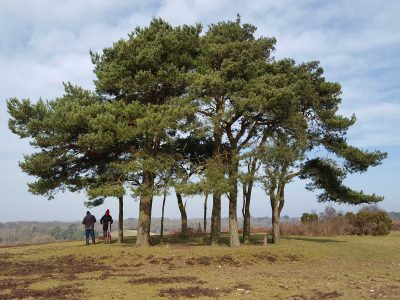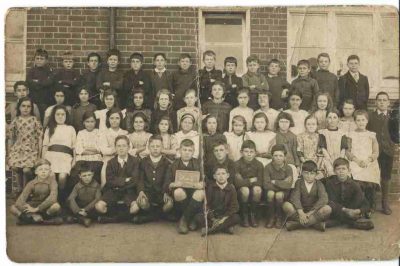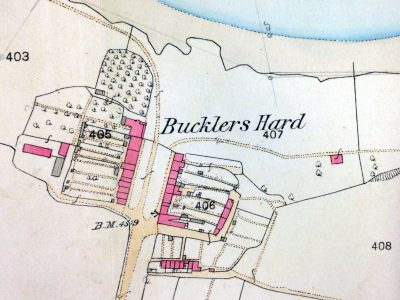The New Forest Knowledge Conference 2017 will celebrate the archaeological and historical research being carried out in and around the New Forest. It will provide an opportunity to find out who is doing what, share the results of recent work, discuss new techniques and approaches and find out how you might get involved in the future.
The conference will run over two days from Friday 27 October through to Saturday 28 October 2017 at the Lyndhurst Community Centre.
The full confirmed programme is below and you can find all the abstracts linked below or by selecting Conference under the subjects theme.
As well as presented papers there will be poster displays from local community groups and students, and various display stands. We will aim to ensure there is enough time for you to enjoy these and also to chat with other individuals and representatives from local community groups and organisations.
Day tickets cost £20, but we hope you will be able to join us for both days.
To encourage this we have set the two day ticket at £30.
Lunch and refreshments will be provided.
Programme
Day 1: Friday 27th October
Morning
Afternoon
Day 2: Saturday 28th October
Morning
Afternoon


Georgina Eleanor Bowden-Smith (nee Long) was born on 20th April 1820. She was the daughter of Walter Long and Lady Mary Carnegie of Corhampton in Hampshire. Walter had inherited Preshaw at Upham from his father, John Long. Lady Carnegie was the daughter of the 7th Earl of Northesk.
Georgina and her husband Richard, moved to Vernalls, a large house in Lyndhurst, in 1856. At first they rented it from Admiral Aitcheson but, according to Georgina’s diaries, they purchased it in 1860. Richard died at Vernalls in 1881. Georgina lived there until she died in 1906, and her son Walter Baird Bowden-Smith until he died in 1932.
In the last year of her life, Georgina wrote: Of what I remember of Lyndhurst and the Neighbourhood nearly 50 years ago (1850-1906). The handwritten diaries, which contain a number of photographs, sketches and watercolours, have been digitised and made available online.
To access each volume, click on the links below:
Volume 1
Volume 2
‘map_os_reference’:”,’map_coverage’:”,’author_name’:”,’creator’:”,’collection.name’:”, ‘record_number’:”,’year_of_publication’:”,’shelf_mark’:’NFRL Box 167′
‘map_os_reference’:”,’map_coverage’:”,’author_name’:”,’creator’:”,’collection.name’:”, ‘record_number’:”,’year_of_publication’:”,’shelf_mark’:’NFRL Box 167′
‘grid_reference’:”,’shelf_mark’:’FF7 Map tank 3, formerly part of FF13-14-02′,’map_envelope’: ”,’map_category’: ”,’map_os_reference’: ‘SU 4007 4107′,’map_revision_date’: ”,’map_coverage’: ‘Dibden Purlieu’,’map_quoted_scale’: ‘1:2,500′,’map_fractional_scale’: ‘[1:2,500]’,’edition’: ”,’comments’: ”,’map_annotated’: ”,’accession_number’: ”,’map_annotation_comment’: ”,’creator’: ‘Ordnance Survey’
‘grid_reference’:”,’shelf_mark’:’FF7 Map tank 3, formerly part of FF13-14-02′,’map_envelope’: ”,’map_category’: ”,’map_os_reference’: ‘SU 3201 3301′,’map_revision_date’: ”,’map_coverage’: ‘Ditton, Ditton Common, Beaulieu Heath’,’map_quoted_scale’: ‘1:2,500′,’map_fractional_scale’: ‘[1:2,500]’,’edition’: ”,’comments’: ”,’map_annotated’: ”,’accession_number’: ”,’map_annotation_comment’: ”,’creator’: ‘Ordnance Survey’
With thanks to Robin Caddy for this contribution.
Our collection of postcards by Edward Mudge is a firm favourite and informs our understanding of life in the area in the early to mid-20th Century. Southampton based photographer Robin Caddy wanted to find out more about Mudge and his way of taking photographs:
Edward Mudge (1881-1964) lived and worked in the Waterside area from 1904 onwards. His photographs will be familiar to many of you from family albums and the wonderful archive at the New Forest Heritage Centre. I was inspired by a friendship with Mudge’s family to find out more about him and his working practices. Naturally I started with John Pemberton’s excellent talk and article which can be found on the website.
I wanted to pay tribute to Mudge and those today with a connection to him. I chose to interview and photograph three people and to recreate their favourite of Mudge’s many thousands of photographs. I also incorporated a few of my own choices.
As anyone who knows the history of Edward Mudge could have predicted, Ashlett Creek featured heavily in the stories and the photographs. To visit the vicinity of his first darkroom and home with his granddaughter was a great privilege. I was delighted to help her make the photograph below. Like the majority of Mudge’s work the negative is made on a glass plate rather than film (or a memory card!) I have then developed and scanned this “dry plate” negative. This hybrid process enables me to use older ways of working which I felt connected me to Mudge but to share them digitally. The images also have a different feel to modern digital photographs without seeming cliched.
I was incredibly grateful to the New Forest Heritage Centre’s centre manager Dr Kath Walker. She took the time to talk me through the collection and show me a large number of original postcards. This really was quite a thrill as it helped me understand their importance as historical documents and a visual record of the area. It also inspired me to ultimately present the photographs as postcards which I sent to those who had collaborated with me on this project.
We are all familiar with the “then and now” style of publication, which juxtaposes older photographs with present day rephotography of the scene. The photographs made this way were titled after the Mudge “originals” which had inspired them. I would encourage everyone to try some photography in this way. Using Mudge’s archive or our own family archive we can learn more about our history. It is even possible to use online maps to “visit” some locations in advance and see exactly where might be a good starting point. I would however encourage you to go beyond simply rephotographing a scene and really think about your connection to that landscape or place and what makes it resonate with you. Sometimes you may need to visit a location several times to really connect with it, make sure to record that whole process and see how your photographers change between visits.
If you would like to see more details of the whole process and the making of these photographs a short documentary video is included here: https://youtu.be/PZivEwNnccg
You may also be interested in my project about Fawley Power Station: https://thepowerstation.myportfolio.com/
At the Christopher Tower New Forest Reference Library, we have been lucky enough to receive a loan of photographs for digitisation. ‘A family history in pictures’ includes a school photograph which is believed to be Eling School. Arthur Purkess has been identified on the back row, eighth from the left. The photograph is likely to date from the 1920s. Can you confirm that this is Eling School? Can you help us to identify anyone else in the picture?
New Forest Gallery Exhibition
21 Jan – 15 Apr, open daily
Discover the biography of the New Forest and its people through maps chosen from the Christopher Tower Reference Library.
These maps of large and small scale, illuminate not only the landscape but the individuals and institutions that shaped the Forest as it is today.
New Forest Centre
Lyndhurst SO43 7NY
www.newforestcentre.org.uk
023 8028 3444
Image: Section from Hampshire Sheet LXXXI.I at a scale of 1:2500 from the parish book: ‘Ordnance Plan of the Parish of Beaulieu. Liberty of Beaulieu. In the County of Hants. Surveyed by Captn Sanford R.E. Zincographed under the direction of Captn. Parsons R.E.F.R.A.S. At the Ordnance Survey Office Southampton. Published by Colonel Sir Henry James R.E. F.R.S. & c. Superintendent October 1868.
‘map_os_reference’:”,’map_coverage’:”,’author_name’:’Forestry Commission’,’creator’:’Forestry Commission’,’collection.name’:’Woods Lease Books’, ‘record_number’:”,’year_of_publication’:”,’shelf_mark’:’The Queen’s House’






